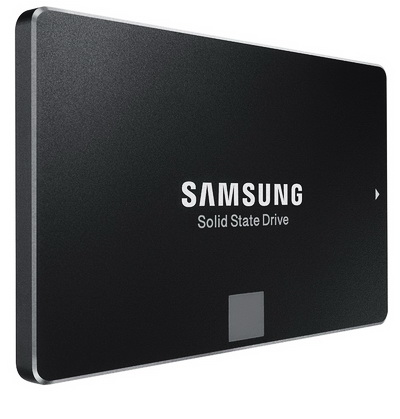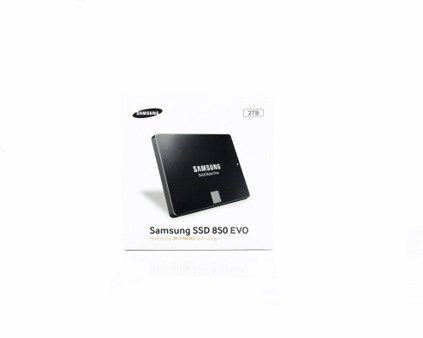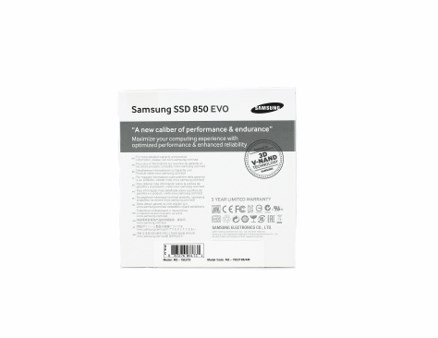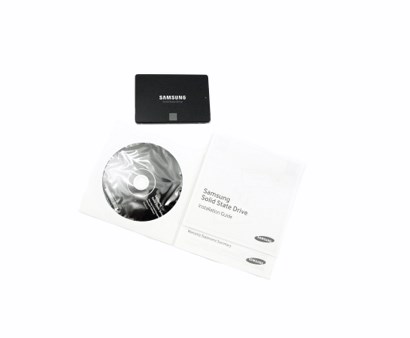INTRODUCTION

It may have taken some time to happen especially since consumer oriented solid state drives (SSDs) have been around for quite some time now but right now they've pretty much saturated the SATA III (6Gb/s) connectivity (although not really in constant/continuous performance) and so until and if something new comes along to replace that interface as well (remember we still have PCIex, M.2 and SAS drives for higher performance levels so that may never happen) manufacturers have chosen to focus on the next best thing which is the release of much higher capacity models aimed towards demanding users and applications. In 2013 and 2014 we did witness the introduction of 960GB/1TB SSD models by quite a few manufacturers but since the capacity gap between regular SSDs and HDDs is still quite large 2TB models have just been introduced into the market with 4TB ones announced to arrive in the coming months (Q1 2016 probably). The 850 EVO line of SSDs by Samsung may have been around for roughly 10 months now but it wasn't until last month that the 2TB variant was announced (along with the 850 Pro 2TB model) and today we are going to dig deeper and see what consumers can expect from it.
Samsung Electronics Co., Ltd. is a global leader in technology, opening new possibilities for people everywhere. Through relentless innovation and discovery, we are transforming the worlds of televisions, smartphones, personal computers, printers, cameras, home appliances, LTE systems, medical devices, semiconductors and LED solutions. We employ 236,000 people across 79 countries with annual sales of US$187.8 billion. Samsung's Memory Business offers the industry's most advanced and extensive range of memory semiconductor products. As a leader in both the design and manufacture of memory semiconductor since 1993, the business provides key memory products including dynamic random access memory (DRAM), static random access memory (SRAM), NAND flash memory, Solid State Drives (SSD) and a range of green memory solutions for use in PC, server and mobile applications. Samsung is also leading the industry in advancements of next generation DRAM and NAND flash technologies while nurturing future memory technologies. To discover more, please visit www.samsung.com.
As you may have figured out by the model name the specifications of the 850 EVO 2TB SSD are very similar with the rest of the line (even more with the 1TB variant) so once again Samsung used their very own 32 layer 3D 3-bit (vertical) V-NAND which they have paired with their new 3-core MHX controller (lower capacity models have 2-core ones) and 2GB of LPDDR3 DRAM cache memory. As usual features include Samsung's TurboWrite technology (a small amount of SLC NAND flash is used to accelerate write performance), full TRIM support, RAID support (with a RAID controller), S.M.A.R.T, Garbage Collection, AES 256 bit encryption (full disk), TCG/Opal & IEEE-1667 support and DevSleep mode. Unfortunately since the 850 EVO is primarily aimed towards consumers it has a rating of 150 TBW (terabytes written) and is covered by a 5 year warranty as opposed to the 850 Pro 2TB model which has a rating of 300 TBW and is covered by a 10 year warranty.
SPECIFICATIONS AND FEATURES

PACKAGING AND CONTENTS
The 850 EVO 2TB SSD arrived inside a white box with a product image at the front, company logo and available capacity.
The 5 year warranty is what the rear of the box is focused on.
Inside the box consumers will find the 850 EVO 2TB SSD, software CD (contains Samsung Magician and Samsung Data Migration programs), warranty statement and installation instructions.
THE 850 EVO 2TB
It may pack 2TB but it's still a 2.5" 7mm thick SSD just like every other in the market.
Typically at the bottom we find a large sticker on which Samsung has placed the drives part number, model name, serial number, barcodes, PSID number (Physical Security ID), capacity, electrical specifications, company logo and several certification and warning logos.
The usual data and power SATA connectors are present at the rear.
Four 3D V-NAND memory modules are placed on one side of the PCB each 256GB in capacity.
On the opposite side we see another 4 memory modules along with the MHX controller and the 2GB LPDDR3 DRAM cache module.
SAMSUNG MAGICIAN
The software CD includes both the Samsung Magician software version 4.6 and the Data Migration version 2.7.


As always the very first screen you will see of the Samsung Magician software is basically an overview of the drive (you can check the SMART attributes from here as well).
The Magician Software gives you the option to perform a fast benchmark to check the speed of the drive.
You can visit the performance optimization page every now and then to "improve" the performance of the drive (it actually works quite well).
Typically i suggest checking the firmware tab as soon as possible to see if Samsung has released a new firmware for the drive.


Two extra features of the Samsung Magician software is that it allows you to set extra overprovisioning space for the drive (improves TRIM and garbage collection) and also allows you to secure erase its contents.
RAPID (Real Time Acceleration Processing of I/O Data) mode basically uses up to 4GB (or 25% whichever comes first) of system RAM (DRAM is much faster compared to NAND flash) to cache frequently accessed data (in short it works like a RAM disk).
You can also check the current data security settings from the Samsung Magician software.
TEST BED


TESTING METHODOLOGY
After over 7 years of testing sold state drives i have concluded that it's almost impossible for any single benchmark suite to accurately measure their performance and that's why in certain benchmark suites we see amazing read/write performance numbers with some drives while in others things are quite different. The reason behind this is that some benchmarking suites are configured to read and write random chunks of data while others read and write constant (sequential) ones. So that's why i always use a very wide selection of benchmarking suites including AIDA64, HD Tach RW, HD Tune Pro, Crystal Disk Mark, Sisoftware Sandra Pro, AS SSD, IOmeter and ATTO. To get the most accurate results each test gets repeated a total of 6 times with the average performance numbers recorded into our charts. Also as of February 25th 2015 our results will also include the Storage Networking Industry Association’s (SNIA) IOMeter tests. These tests include a 12 Hour write test used to “simulate” performance degradation over time and a mixed workload test which basically shows what you can expect when using an SSD continuously for roughly two hours. Unfortunately due to the time required for these tests we repeat them a total of 3 times and not 6 as the above.
Many people have made inquiries about our charts in the past so once again please do keep in mind that the Charts have the average performance numbers of each drive recorded and not the peak (highest) ones. Also although every single one of these programs can help potential buyers choose the right drive for their needs you should also remember that from any kind of benchmark up to real world usage the gap is not small (and usually most differences will go unnoticed by most people). All tests were performed in a fresh Windows 7 Ultimate x64 installation with every update installed up to August 5th 2015.
TEST RESULTS - AIDA64 / ATTO


TEST RESULTS - HD TACH RW / HD TUNE PRO


TEST RESULTS - SISOFTWARE SANDRA PRO / CRYSTAL DISK MARK X64


TEST RESULTS – AS SSD / IOMETER


TEST RESULTS – IOMETER SNIA



TEST RESULTS – RAPID MODE









CONCLUSION

The entire 850 line of SSDs (both EVO and Pro) has been leading the charts for quite some time now both in terms of performance and durability so when Samsung announced the availability of the 2TB model we didn’t expect that to change. True performance levels vary from model to model but usually the higher capacity models perform better than the lower capacity ones and although we didn’t have the chance to test the 1TB variant the 2TB did incredibly well in all our tests. Of course it did fall behind to some of the other drives in various tests but overall its read/write performance numbers are excellent. In terms of durability the EVO line still has a TBW rating half of what the Pro line has but in the end this is not something consumers should be concerned with (even 150 TBW is enough for someone to write 40GB worth of data on the drive every single day for 10 years).
3-4 years ago getting a top of the line 512GB SSD would push you back almost USD800/800Euros so with that in mind the current price tag of USD796.93 inside the USA (Amazon.com) and 788.13Euros inside the EU (Amazon.de) for the Samsung 850 EVO 2TB SSD doesn’t sound bad at all. Of course not everyone will be willing to spend that much for an SATA III SSD and to be completely honest with all of you I don’t think that SSDs were ment to be used just for storage so 2TB might just be too much for the majority of the consumer base. The decision however is up to you since it always comes down to what you need and/or want. Our job is to rate products based on what we see and since the 850 EVO 2TB has everything going for it from excellent read/write performance and the highest capacity for a consumer oriented SSD up to durability and a 5 year warranty it gets our Platinum Award.
 PROS
PROS
- Build Quality / Durability (150 TBW)
- Excellent Overall Performance
- Features (TurboWrite/RAPID Mode/eDrive Support)
- Samsung Magician Software
- 5 Year Warranty
- 2TB Capacity
CONS
- Price (For Some)

 O-Sense
O-Sense























.png)

